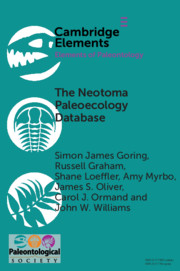Element contents
The Neotoma Paleoecology Database
Published online by Cambridge University Press: 22 October 2018
Summary
Keywords
- Type
- Element
- Information
- Series: Elements of PaleontologyOnline ISBN: 9781108681582Publisher: Cambridge University PressPrint publication: 29 November 2018
References
- 22
- Cited by



